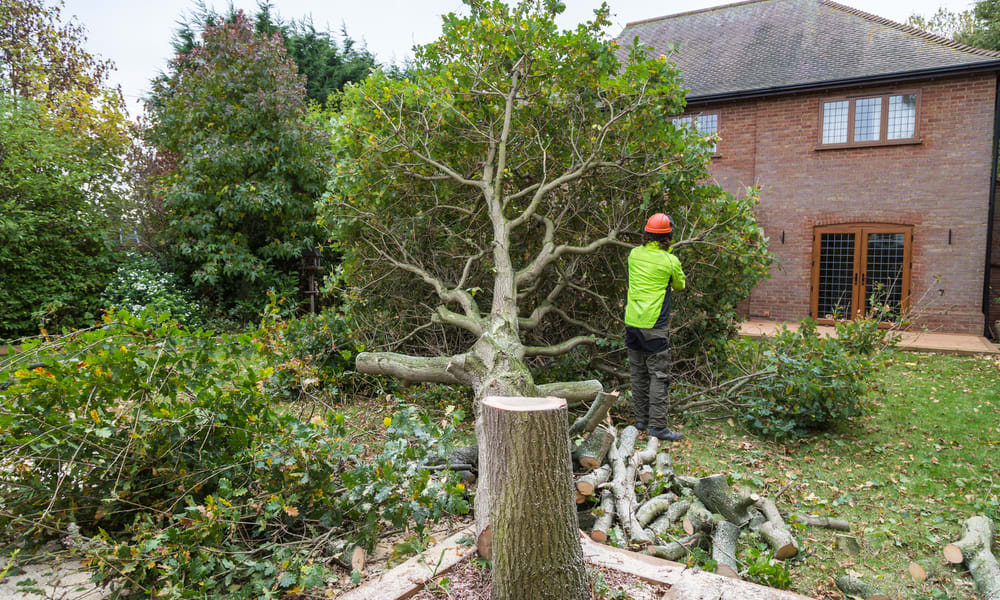Enhance Your Property with Expert Tree Services
Professional tree services keep your landscape safe, attractive, and healthy. From precision pruning and routine trimming to emergency removals and stump grinding, certified arborists offer the knowledge and equipment needed to protect trees and property. Learn how expert tree care improves curb appeal, boosts property value, and prevents hazards with smart maintenance and species selection.

Trees add shade, character, and ecological value to any property, but they also demand knowledgeable care. Proper maintenance extends a tree’s life, reduces safety risks, and keeps your grounds looking their best. This article breaks down why professional tree work matters, how pruning differs from trimming, what credentials to seek in an arborist, the role of tree care in landscaping, and typical service costs to help you plan.
Why professional tree trimming matters
Regular, skillful trimming protects both trees and people. Removing dead, broken, or diseased limbs prevents decay from spreading and reduces the chance of falling branches that could injure people or damage structures. Thoughtful cuts improve airflow and light penetration through the canopy, conditions that promote healthy growth and lower the risk of fungal and pest problems. In addition to health benefits, trimming can correct structural flaws—like weak crotches or crossing branches—so trees grow in a stronger, more resilient form.
Proper trimming also enhances appearance. A balanced canopy and tidy lines complement a landscape design, improve sightlines, and allow other plants to thrive. Because the work requires knowledge of growth habits, timing, and cutting techniques, hiring trained professionals helps ensure pruning wounds heal correctly and future issues are minimized.
How pruning differs from trimming
Although the terms are often used interchangeably, pruning and trimming serve distinct purposes. Pruning is a targeted, biology-driven practice: arborists remove specific branches to promote tree health, stimulate flowering or fruiting, correct defects, or redirect growth. It often requires an understanding of species-specific responses and seasonal timing.
Trimming tends to focus on overall form, clearance, and size control. Homeowners commonly request trimming to keep branches away from roofs, power lines, or walkways, or to preserve a desired silhouette. Both pruning and trimming should be executed with care—improper cuts or heavy removal can stress a tree or create long-term problems—so experienced professionals are essential.
What to look for in an arborist
Selecting the right professional is as important as the work itself. Key qualifications to seek include:
- Certification from reputable organizations such as the International Society of Arboriculture (ISA), which indicates formal training and testing.
- Proof of insurance and bonding to protect you if accidents or property damage occur during the job.
- Demonstrable experience with tree species and conditions common in your area; request references or examples of recent work.
- A clear proposal outlining the scope, methods, timeline, and cleanup procedures, plus any necessary permits.
- Safety practices and appropriate equipment, especially for larger trees or jobs near utilities.
A reputable arborist will explain the rationale for any recommended work, discuss timing and aftercare, and provide written estimates.
How tree services fit into landscaping
Trees are foundational elements in landscape design. Professional tree care ensures specimens are healthy and appropriately sited, which reinforces a cohesive outdoor aesthetic and supports long-term landscape goals. Arborists can advise on species selection, taking into account soil type, sun exposure, mature size, and maintenance needs. This guidance helps avoid future conflicts—like root intrusion into foundations or excessive shading of gardens.
Routine care from a tree professional also helps maintain property value. Well-maintained trees enhance curb appeal and create desirable outdoor spaces. Coordinating with landscape designers, arborists can implement planting plans and maintenance schedules that allow trees and other plants to thrive together over time.
| Service | Description | Estimated Cost Range |
|---|---|---|
| Tree Trimming | Shaping and selective branch removal for health and clearance | $200 - $800 per tree |
| Tree Removal | Full removal, including large or hazardous trees | $400 - $2,000+ |
| Stump Grinding | Grinding and removal of remaining stumps | $100 - $400 per stump |
| Tree Planting | Professional planting of new trees with proper technique | $150 - $300 per tree |
| Emergency Services | Storm response, hazardous limb removal, urgent care | $250 - $1,000+ |
Prices, rates, or cost estimates mentioned in this article are based on the latest available information but may change over time. Independent research is advised before making financial decisions.
Additional considerations and practical tips
Costs vary widely depending on tree height, trunk diameter, location (proximity to power lines or structures), accessibility, and the presence of hazards. Always obtain multiple written quotes and confirm the scope of work, disposal fees, and any extra charges. Many companies provide free estimates and can advise whether a permit or utility notification is required.
Emergency response for storm damage or unstable trees is a specialized service; choose a provider with experience in urgent removals and appropriate safety gear. For long-term landscape health, consider a maintenance plan: periodic inspections and scheduled pruning can prevent costly emergencies and maintain tree vigor.
Finally, think beyond immediate needs. Proper planting, species selection, and routine care deliver environmental benefits—shade that reduces energy use, carbon sequestration, improved air quality, and habitat for wildlife. Investing in professional tree services protects both your property and the broader landscape.
By partnering with certified, insured arborists and planning regular care, you can enjoy beautiful, safe, and healthy trees for decades. Reach out to local professionals, compare recommendations and estimates, and choose a team that communicates clearly and prioritizes tree health and safety.






